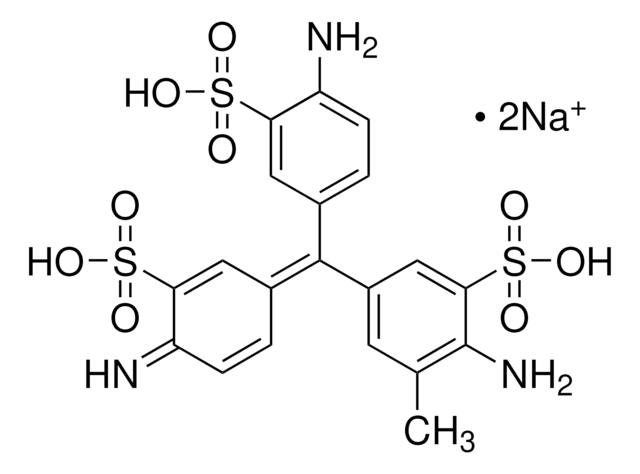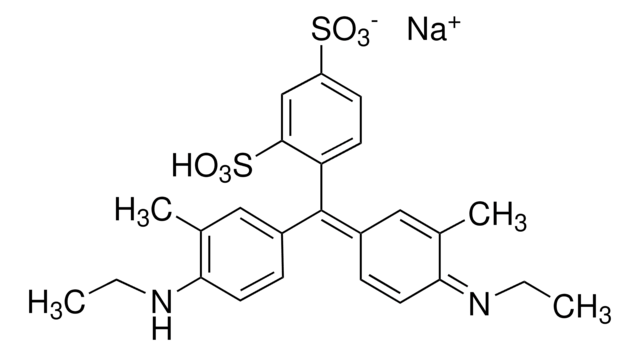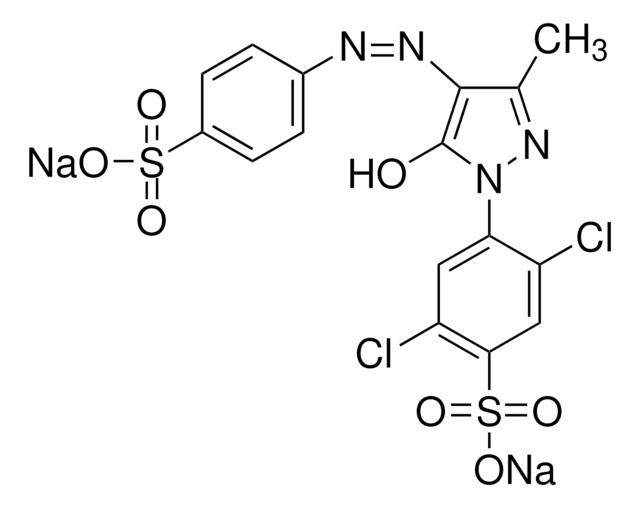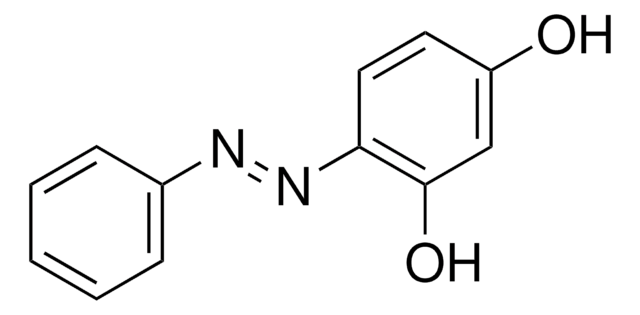Wichtige Dokumente
861286
Orange G
certified by the Biological Stain Commission, Dye content 80 %
Synonym(e):
1-Phenylazo-2-naphthol-6,8-disulfonsäure Dinatriumsalz, 7-Hydroxy-8-phenylazo-1,3-disulfonsäure Dinatriumsalz, Säureorange 10, Woll-Orange 2G
About This Item
Empfohlene Produkte
Qualität
certified by the Biological Stain Commission
Qualitätsniveau
Form
powder
Zusammensetzung
Dye content, 80%
Methode(n)
microbe id | staining: suitable
Farbe
orange to very dark orange, and Red to Very Dark Red and Orange-Red and Red-Orange and Dark Red-Orange
Löslichkeit
H2O: 1 mg/mL
λmax
475 nm
ε (Extinktionskoeffizient)
≥10000 at 329-331 nm in H2O
≥17000 at 473-479 nm in H2O
≥20500 at 246-250 nm in H2O
Anwendung(en)
diagnostic assay manufacturing
hematology
histology
Lagertemp.
room temp
SMILES String
[Na+].[Na+].Oc1ccc2cc(cc(c2c1\N=N\c3ccccc3)S([O-])(=O)=O)S([O-])(=O)=O
InChI
1S/C16H12N2O7S2.2Na/c19-13-7-6-10-8-12(26(20,21)22)9-14(27(23,24)25)15(10)16(13)18-17-11-4-2-1-3-5-11;;/h1-9,19H,(H,20,21,22)(H,23,24,25);;/q;2*+1/p-2/b18-17+;;
InChIKey
HSXUHWZMNJHFRV-QIKYXUGXSA-L
Suchen Sie nach ähnlichen Produkten? Aufrufen Leitfaden zum Produktvergleich
Anwendung
Biochem./physiol. Wirkung
Lagerklassenschlüssel
11 - Combustible Solids
WGK
WGK 3
Flammpunkt (°F)
Not applicable
Flammpunkt (°C)
Not applicable
Persönliche Schutzausrüstung
Eyeshields, Gloves, type N95 (US)
Hier finden Sie alle aktuellen Versionen:
Besitzen Sie dieses Produkt bereits?
In der Dokumentenbibliothek finden Sie die Dokumentation zu den Produkten, die Sie kürzlich erworben haben.
Kunden haben sich ebenfalls angesehen
Unser Team von Wissenschaftlern verfügt über Erfahrung in allen Forschungsbereichen einschließlich Life Science, Materialwissenschaften, chemischer Synthese, Chromatographie, Analytik und vielen mehr..
Setzen Sie sich mit dem technischen Dienst in Verbindung.








